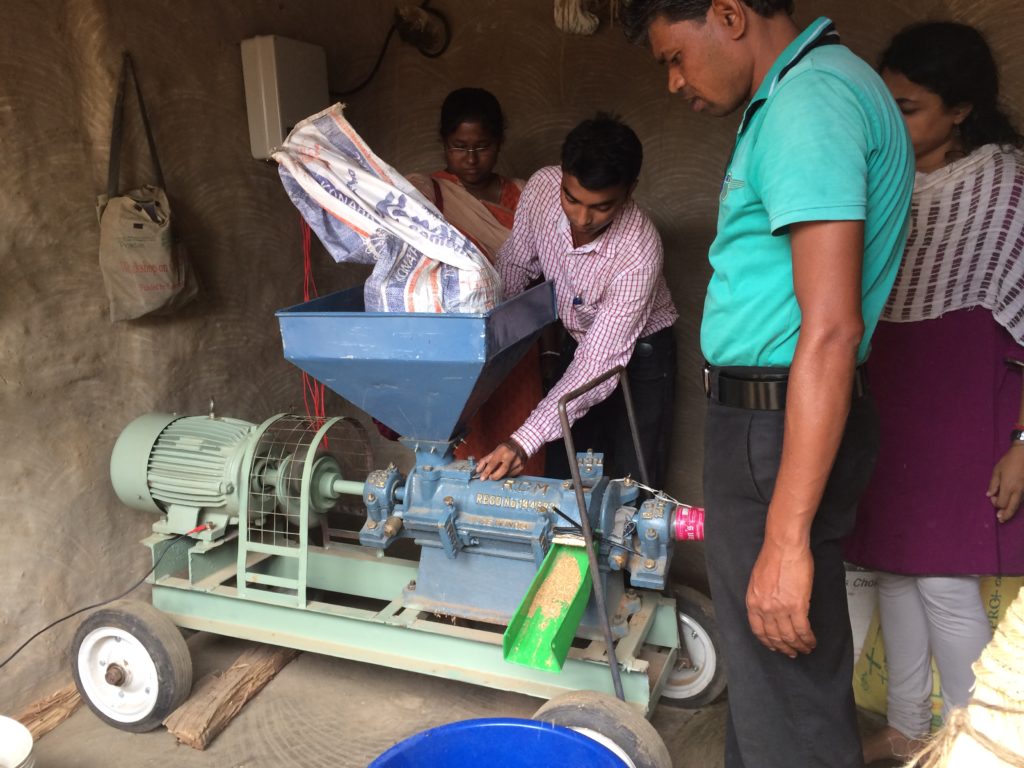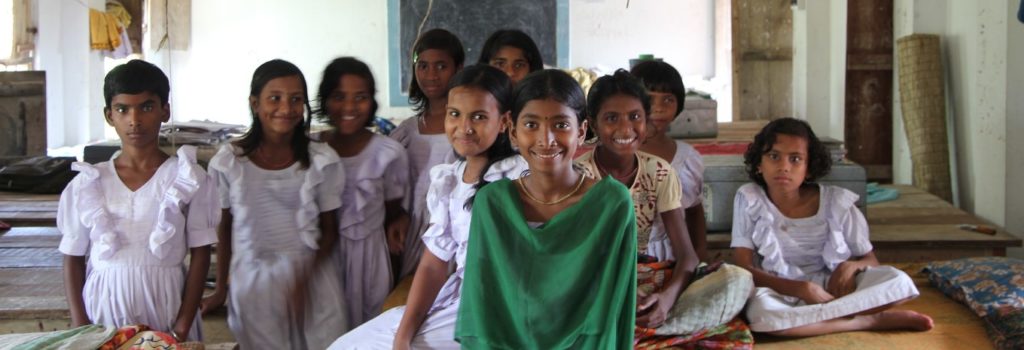Interview with Vijay Bhaskar
Country Director, Mlinda
Location: India
“We pitched our tariff as an alternative to fossil fuels, and they’re willing to pay our tariff and make sure they’re consuming responsibly”.
Mlinda’s first project to bring renewable energy to the Sunderbans, in West Bengal, didn’t go as well as hoped. The organisation wanted to replace the diesel rickshaws that run as public transport on the islands with solar-powered, battery-operated rickshaws. It built a solar-power charging station that could produce 3-5 kW per day, but the manufacturer couldn’t produce the vehicles at a mutually acceptable price. When the project stalled, local people approached Mlinda and asked if they could use the energy from the charging station in their homes instead.
The size of the islands—between 70 and 100 square km—and the sparse distribution of the population meant that this was not possible, so the organisation developed a new plan; small pico-grid systems able to power 10 houses at a time. Each grid has its own photovoltaic (PV) plate module of 250 watts, which is mounted onto the rooftop of one house, and can power three LED lights and a mobile charging point in each home, from 6pm to 11pm.

Since that first project in 2012, the organisation has expanded its operations to more states, more communities, and has even set up its own energy utility. Today, approximately 3,500 homes, 200 shops, and three schools have renewable energy access through Mlinda’s projects.
Mlinda, meaning ‘stewardship of the environment’ in Swahili, was founded by Leisl Eisenbeiss and Richard Azarnia. After working as a wildlife photographer in Kenya in the early 2000s, Eisenbeiss wanted to found an organisation for the conservation of wildlife, habitat and the environment. Mlinda started with those aims and slowly evolved into an organisation that focuses on reducing greenhouse gases and encouraging the use of goods with a negligible, or positive, environmental impact.
“We work in areas that are environmentally fragile or sensitive, or that are underdeveloped,” says Vijay Bhaskar, Mlinda’s country director in India. “Mostly it’s a combination”.
The benefits of Mlinda’s pico-grid system soon became known throughout the Sunderbans and the organisation expanded from the first island – Brojoballavpur – to six others, into the Purulia district of West Bengal, and into the neighbouring state of Jharkhand.
The Indian government has struggled to extend national grid access to Jharkhand. It’s a state of remote hills and depleting jungle cover and, traditionally, has been dominated by left-wing extremism, says Bhaskar. Mlinda, however, has been able to establish pico-grids in 30 villages in the East Singbhum, Simdega, and Gumla districts.

For Mlinda, finding the right pricing plan for communities is an area of constant experimentation. In the beginning, the organisation would build the PV grid and help the 10 houses using it to form a Joint Liability Group with a bank account so that they could access a five-year, 10% interest loan from the National Bank for Agriculture and Rural Development – “a good interest rate in India,” says Bhaskar.
To pay off the loan and access the power, each household pays a monthly installment of around 200 rupees (US$3), which is roughly the amount they would spend on kerosene. Once the group has paid off the loan, they own the grid.
Mlinda is also working to provide renewable energy access to boarding schools in remote areas. The principal of each school forms a committee of five faculty members and five parents, and Mlinda helps them open a bank account and access a loan in the same way as the villagers.
“Before, every parent would pay one rupee per day for a kerosene lamp so that their child could study at night,” explains Bhaskar. “We asked them if they would be willing to pay double that for a good-quality, mounted light. Now they pay two rupees per day which the school committee collects to pay the loan.”

Mlinda began working in the poorest villages but soon realised that its existing PV systems were limited as it started working with more well-off communities, who wanted to power TVs, laptops, fans and even farming equipment. To provide the extra power, Mlinda contacted the owners of diesel-powered generators in local markets and offered to replace the diesel with solar energy, but with extra capacity than they needed. The owner of the generator is set up as an entrepreneur with the bank for a loan, and households are linked to the generator for a tariff which the owner uses to pay it back.
“This worked well until we moved into larger villages which tend to be more politically sensitive,” says Bhaskar. “We knew we needed to charge more to scale up in the villages, but people are reluctant to pay more than 200 rupees”.
Mlinda faced a conundrum. How could they move the project along when villages couldn’t pay? The solution, it found, was to become a utility; Mlinda would own the infrastructure, be financed by the banks and, unlike the villagers, be able to provide collateral for the loan. Mlinda Sustainable Environment Private Ltd was established around 18 months ago and has set up PV systems that can produce 25-30 kW and provide power 24-hours a day.
For this second phase of the organisation’s work, Mlinda chooses villages they have not previously worked in, and that is poor but has the potential to develop, for example water resources for irrigation and proximity to markets. The village must also have to have a minimum population of 50 households.

In the eight villages where Mlinda has already set up this larger system, two were completely off-grid; the grid had reached the other six, but the villages only had power for two to three hours a day. And even though it’s more expensive, people are still abandoning the grid in favour of Mlinda’s utility. “We charge a mutually-decided tariff that is about eight times more per unit than the national grid,” explains Bhaskar. “But we pitched our tariff as an alternative to fossil fuels, and they’re willing to pay our tariff and make sure they’re consuming responsibly”.
—Katherine Purvis




